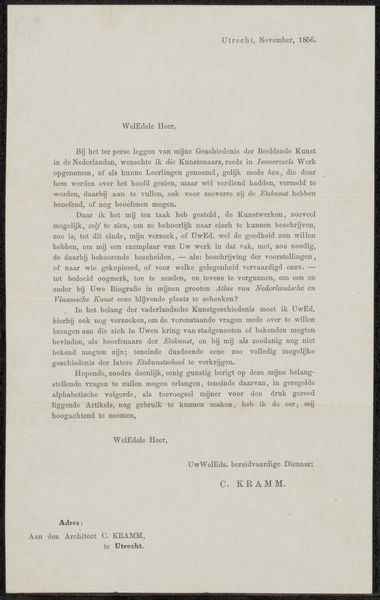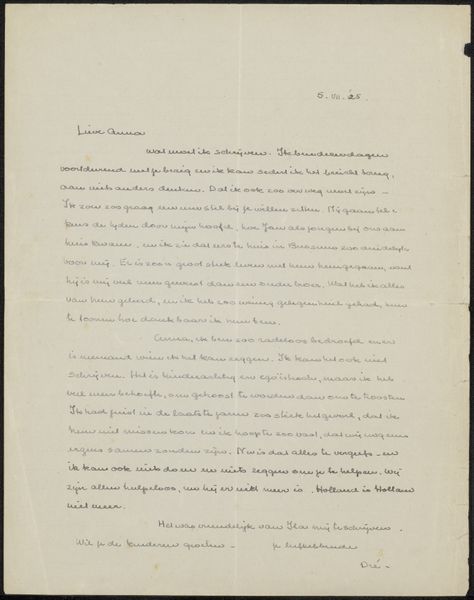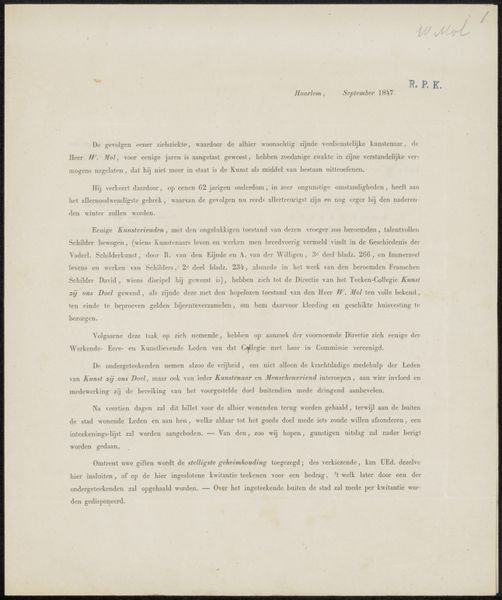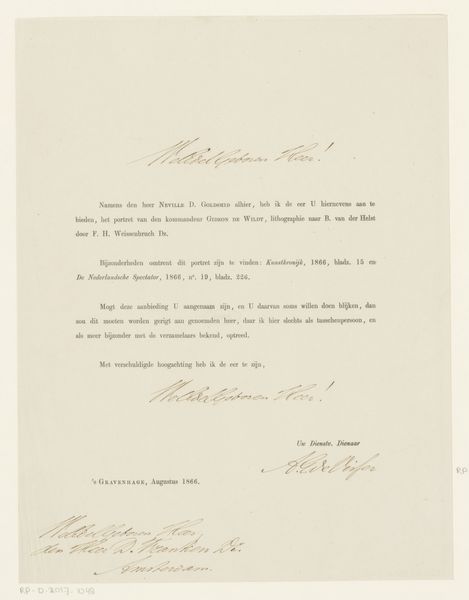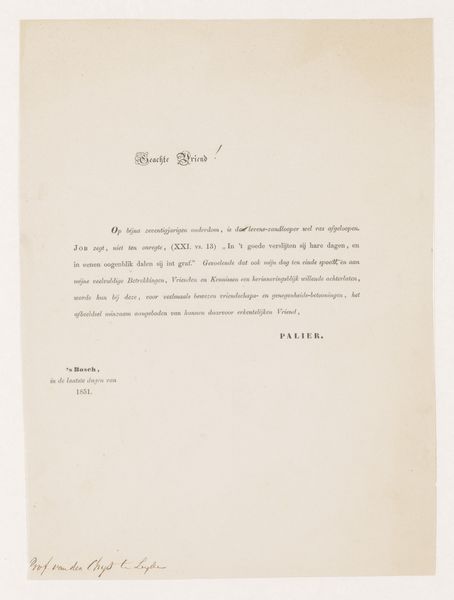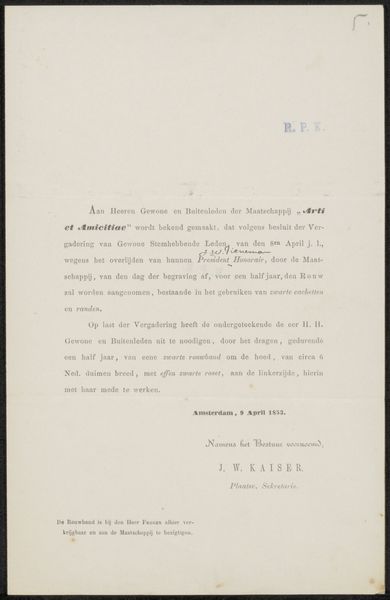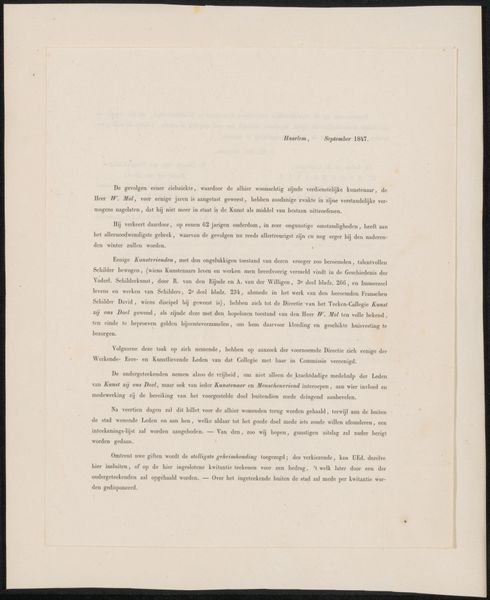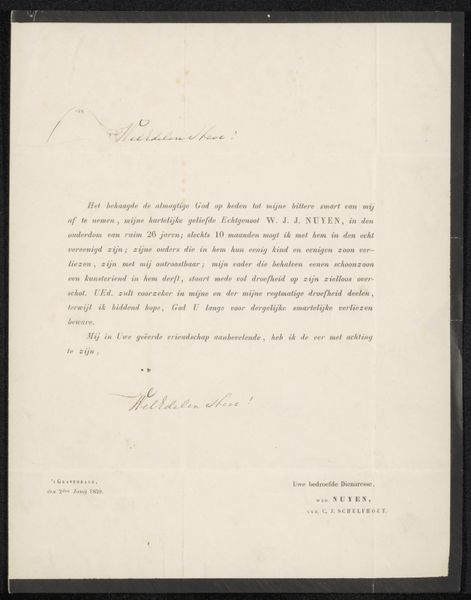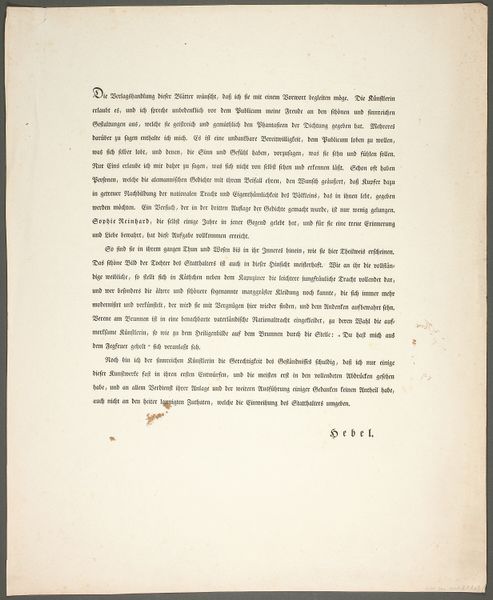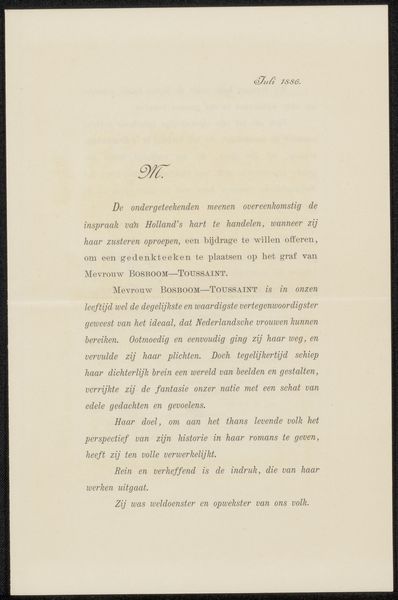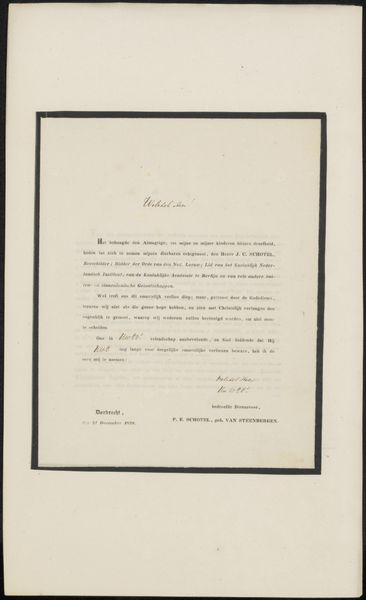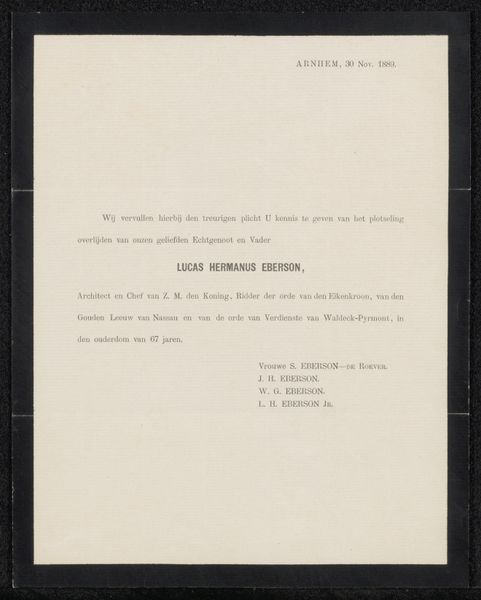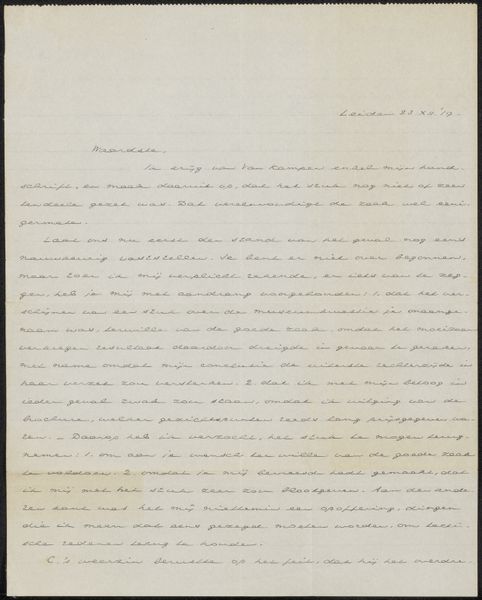
print, paper, typography
# print
#
paper
#
typography
Copyright: Rijks Museum: Open Domain
Editor: This is "Brief aan Philip Zilcken," a print on paper from possibly 1913, held at the Rijksmuseum, by Jonkheer Victor Eugène Louis de Stuers. The typography gives it an official air, but the handwritten inscription softens it. It’s kind of intriguing in its simplicity, almost austere. What do you see in this piece? Curator: It whispers of gratitude and acknowledgment, doesn't it? Imagine the scene: a prominent figure, Jonkheer de Stuers, receiving news of a marble bust commissioned in his honor on his 70th birthday! This letter, I believe, is his attempt to put into words what such an honour meant to him. Can you sense the humility despite his social standing? It's a paradox that fascinates me, isn’t it – someone of rank struggling for expression. Editor: Yes, definitely. It’s that contrast – the formal print versus the handwritten note – that really makes it. It's like a carefully orchestrated performance with a little bit of personal improvisation thrown in. Do you think the handwriting was meant to make it more intimate? Curator: Absolutely! It’s like a wink across the centuries. That penned postscript suggests a closer relationship with Philip Zilcken, the recipient. In a way, that handwritten addition personalizes what otherwise is a printed matter – a letter that may have been reproduced for wider circulation. Does that shift your perspective at all? Editor: It does. Knowing that changes the whole dynamic, adding another layer to unravel. It becomes less about public pronouncements and more about individual connections. Thank you! Curator: Indeed. The beautiful, messy, heartfelt individuality shining through the structure. It’s a good reminder that art, even in the most seemingly rigid forms, can reveal our shared humanity.
Comments
No comments
Be the first to comment and join the conversation on the ultimate creative platform.
